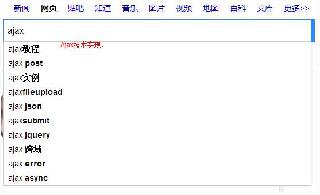如何在python中判断变量的类型
python的数据类型有:数字(int)、浮点(float)、字符串(str),列表(list)、元组(tuple)、字典(dict)、集合(set)
一般通过以下方法进行判断:
1、isinstance(参数1,参数2)
描述:该函数用来判断一个变量(参数1)是否是已知的变量类型(参数2) 类似于type()
参数1:变量
参数2:可以是直接或间接类名、基本类型或者由它们组成的元组。
返回值: 如果对象的类型与参数二的类型(classinfo)相同则返回 True,否则返回 False
例子:
#判断变量类型的函数def typeof(variate): type=None if isinstance(variate,int): type = 'int' elif isinstance(variate,str): type = 'str' elif isinstance(variate,float): type = 'float' elif isinstance(variate,list): type = 'list' elif isinstance(variate,tuple): type = 'tuple' elif isinstance(variate,dict): type = 'dict' elif isinstance(variate,set): type = 'set' return type# 返回变量类型def getType(variate): arr = {'int':'整数','float':'浮点','str':'字符串','list':'列表','tuple':'元组','dict':'字典','set':'集合'} vartype = typeof(variate) if not (vartype in arr): return '未知类型' return arr[vartype]#判断变量是否为整数money=120print('{0}是{1}'.format(money,getType(money)))#判断变量是否为字符串money='120'print('{0}是{1}'.format(money,getType(money)))money=12.3print('{0}是{1}'.format(money,getType(money)))#判断变量是否为列表students=[’studentA’]print('{0}是{1}'.format(students,getType(students)))#判断变量是否为元组students=(’studentA’,’studentB’)print('{0}是{1}'.format(students,getType(students)))#判断变量是否为字典dictory={'key1':'value1','key2':'value2'}print('{0}是{1}'.format(dictory,getType(dictory)))#判断变量是否为集合apple={'apple1','apple2'}46 print('{0}是{1}'.format(apple,getType(apple)))
返回:

2、通过与已知类型的常量进行比较
例子:
#判断变量类型的函数def typeof(variate): type1 = '' if type(variate) == type(1): type1 = 'int' elif type(variate) == type('str'): type1 = 'str' elif type(variate) == type(12.3): type1 = 'float' elif type(variate) == type([1]): type1 = 'list' elif type(variate) == type(()): type1 = 'tuple' elif type(variate) == type({'key1':'123'}): type1 = 'dict' elif type(variate) == type({'key1'}): type1 = 'set' return type1# 返回变量类型def getType(variate): arr = {'int':'整数','float':'浮点','str':'字符串','list':'列表','tuple':'元组','dict':'字典','set':'集合'} vartype = typeof(variate) if not (vartype in arr): return '未知类型' return arr[vartype]#判断变量是否为整数money=120print('{0}是{1}'.format(money,getType(money)))#判断变量是否为字符串money='120'print('{0}是{1}'.format(money,getType(money)))money=12.3print('{0}是{1}'.format(money,getType(money)))#判断变量是否为列表students=[’studentA’]print('{0}是{1}'.format(students,getType(students)))#判断变量是否为元组students=(’studentA’,’studentB’)print('{0}是{1}'.format(students,getType(students)))#判断变量是否为字典dictory={'key1':'value1','key2':'value2'}print('{0}是{1}'.format(dictory,getType(dictory)))#判断变量是否为集合apple={'apple1','apple2'}print('{0}是{1}'.format(apple,getType(apple)))
返回:

补充:
isinstance() 与 type() 区别:
type() 不会认为子类是一种父类类型,不考虑继承关系。 isinstance() 会认为子类是一种父类类型,考虑继承关系。如果要判断两个类型是否相同推荐使用 isinstance()。
以上就是如何在python中判断变量的类型的详细内容,更多关于Python判断变量类型的资料请关注好吧啦网其它相关文章!
相关文章:

 网公网安备
网公网安备